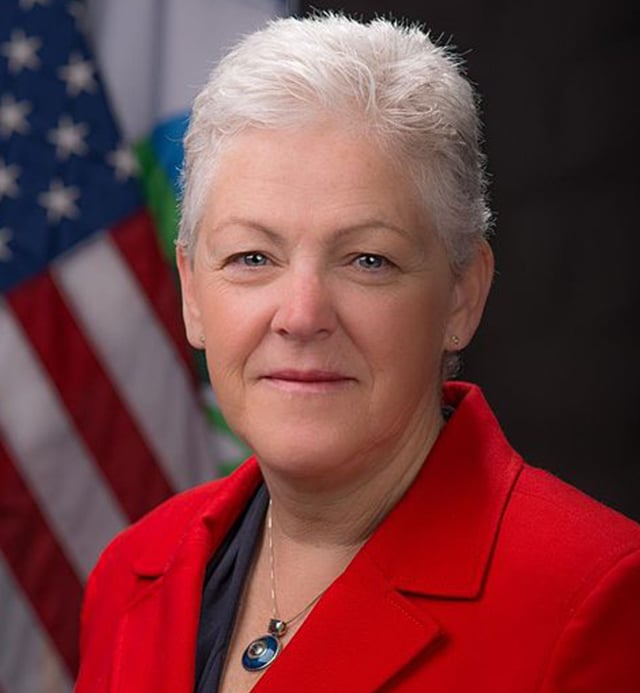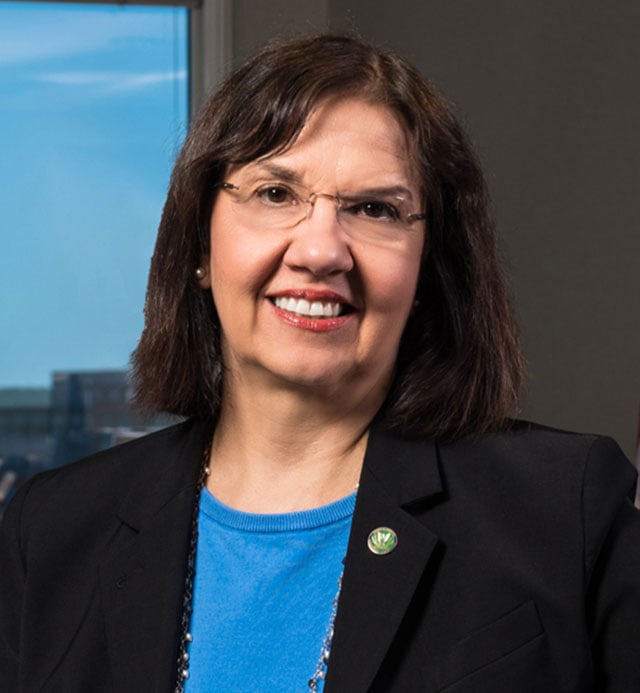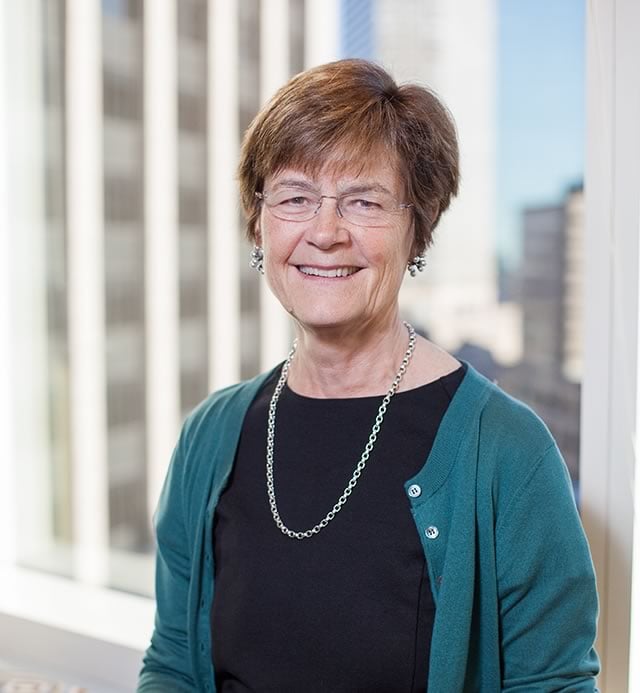-
Energy, Technology, and the Future: A Conversation with FERC Commissioner Cheryl LaFleur and former EPA Administrator Gina McCarthy
The continuous development of new energy technologies, the debate over the impacts of traditional ones, and shifting political winds are reshaping global and domestic energy markets. At an Analysis Group event hosted at the Boston Public Library in February 2018, Analysis Group’s Susan Tierney sat down with Cheryl LaFleur, Commissioner and former Chair of the Federal Energy Regulatory Commission (FERC), and Gina McCarthy, former Administrator of the Environmental Protection Agency (EPA), to discuss the intersection of policy, technology, and markets in the electric and natural gas industries.
Dr. Tierney: In this complicated world, it seems that we need to figure out how to align energy and environmental regulation, and recognize the main interactions between public health and energy production and use. Would you comment on ways to advance the conversation on this issue?

Gina McCarthy: Former Administrator of the Environmental Protection Agency (EPA)
Administrator McCarthy: Public health is what EPA is all about. And that includes the intersections between health and climate change. The good news is, we’re not missing the boat in terms of carbon reductions. We’re farther ahead of where we ever anticipated we would be by now, or even what’s been required. Achieving those gains wasn’t as hard as we thought, because they can be traced to trends in energy markets themselves, not just regulation. Undoing those gains would be hard now. So I think, in terms of both health and climate, the world is actually heading in the direction that we were all hoping for, over the long term. But we still need to do much more. And we need to get past the idea that climate change is only happening because of what happens somewhere else, or that it is something that only affects people living on the coastline. It’s happening to all of us, and all of us need to do things about it.
Commissioner LaFleur: I think it’s fair to say that global and national climate issues now are getting refracted into specific disputes about infrastructure in specific locations. This focuses people’s attention on these issues in a local way, while reflecting a broader global concern.
Administrator McCarthy: People fret because they have seen the federal government taking a leadership role on addressing climate change for the previous eight years, and now, of course, the pendulum has swung back. It’s happening in the states, in localities, and in so many public and private places all around the country. Actually, we should remember that what’s always driven environmental improvements has been grassroots activism that animates states. And the states animate regions, and regions (and even private-sector actors in those regions) then start pushing to harmonize policies by seeing federal government action. In fact, in one sense the current inattention (if not backward movement) in DC has sparked some really interesting work and investment from places that we wouldn’t have seen otherwise.
Dr. Tierney: One of the benefits of the Clean Power Plan was that it provided some level of certainty for decisions going out to 2030. But the choices we face today need to look out even further. We are in the middle of huge transitions; individual states and even corporations are making their own energy decisions about energy preferences, as the economics of new energy technologies and resources are reshaping markets. But also, there are huge decisions being made right now about long-lived capital investments and the siting of new energy infrastructure. Lots of people have different views about what’s needed and why.

Cheryl LaFleur: Commissioner and former Chair of the Federal Energy Regulatory Commission (FERC)
Commissioner LaFleur: At FERC, we’re economic regulators, not climate regulators, but even so, the broader climate challenge affects so much of what we do. The impact of carbon emissions is affecting the energy choices people are making, and it’s affecting the energy choices that the states are making. At FERC, we’re trying to figure out how the markets can accommodate those decisions – how those choices can be rationalized with our responsibility to make sure that the lights stay on, that the system is resilient, and that people pay the right amount for their energy. One problem is that we’re using laws made in the 1930s or 1940s or 1970s to address problems that we didn’t even know about when they were enacted. And we’re trying to adapt our implementation of those laws, the best we can, to today’s challenges.
Administrator McCarthy: I think one thing that’s different from what we’ve seen before is that private companies are going to be major factors going forward. I think the business community is sensitive to the fact that the attitudes and values of younger generations are changing. The younger generation is making demands on the business community, regardless of who the president of the United States happens to be. Business leaders know that this is a long game and that it’s not going to continue like this forever in DC. They are sensitive to being on the wrong side of this issue – they don’t want to be left high and dry when the tide turns again.
Commissioner LaFleur: In the boardrooms, anyway, they are looking beyond current trends and at what the future holds. They are making decisions to invest in things that are going to last 40 or 50 or 60 years, so they are looking past the next four or eight years. The question is one of efficiency: Can we make these changes in a coordinated, least-cost way, where consumers pay the least they can, or are we going to continue in an inefficient, messy, scattered, expensive, and contentious way?
Administrator McCarthy: It’s very challenging to figure out how to position yourself now to do well beyond 2025. The world is changing. I don’t worry about 2025 anymore. I worry about putting in place a signal today about what we need in 2035 or 2040. That won’t be easy. If we’re not investing today in new ideas and technologies and solutions that are needed by then, then it will be enormously challenging to figure out how to address climate change in a way that gets you broad public support. Facts have to be brought to the table.

Susan F. Tierney: Senior Advisor, Analysis Group
Dr. Tierney: Technology is changing, too, but technology has always been double-edged. While adapting markets to new technologies (and vice versa) is sometimes chaotic and disruptive, it’s also going to be quite exciting. Business models are changing, at least on the electric side, and I think a lot of interesting opportunities, a lot of positive things, can come out of that.
Administrator McCarthy: A good regulator simply provides direction. Good regulation doesn’t try to get to a particular end result. With that approach, we are seeing an incredible energy transformation. I think we’re seeing the market shift, and it will continue to move down that road.
Commissioner LaFleur: Technology has changed, and so have markets. Take, for example, the debate over the retirement of coal plants. There are still more than 1,000 coal plants in the country. We need to consider, what’s the trajectory of retirements? What’s the curve? The fact is that nobody is building new coal plants. Instead, major utilities, even those with significant coal portfolios, are announcing long-term carbon reduction goals, because they believe that’s what the future will demand.
Administrator McCarthy: There needs to be a very honest discussion about our needs, our opportunities, and our challenges. In one sense, the environmental debate has made people afraid of choices that lead to a cleaner, healthier, and more sustainable future. But we’ve got to be honest: Sometimes the path forward will in the short run present challenges to some sectors or communities. Denying that, or ignoring the facts and the data, is not the way to go. It’s never easy, but you’ll never get anywhere that way. We need to be honest and then address real impacts on real communities.
Commissioner LaFleur: These issues are also affecting debates about what kinds and amounts of new infrastructure are needed, and about what should be approved or not. If we truly want to go beyond just the next phase of the Clean Air Act and achieve even deeper de-carbonization, we’re going to have to access some of the location-constrained resources that require new infrastructure to connect them to the system. If you’re going to have electrification, you’re going to need electricity, and you may need transmission to connect those resources to consumers. So we can’t just keep foreclosing options. Something has to be the right answer; it can’t be the right answer to oppose everything. We still need electricity, and have to figure out, long-term, where is it coming from, and then allow the steps to enable it.
Dr. Tierney: The discussions in the energy community about the future tend to be tied to two different narratives. In one: It’s a bright future, because there are cleaner and better ways to make and deliver electricity, and we’re going to have microgrids and fuel cells and smart grids and storage and all this cool stuff. And as we add new electric vehicles and electrify things that are now provided by direct use of fossil fuels, electricity demand will grow. In the other narrative, however, the view is: No. Although those changes will occur, technology is making everything that uses electricity more efficient – buildings and machines and appliances – so demand is going down, and will keep going down. So, is technology the future of the power business, or its demise?
Administrator McCarthy: I’ve never seen those things as opposites. The focus needs to be, what can we do? Energy efficiency is almost always the first, best solution. But technology and electrification offer lots of opportunities to deal with climate change. It’s especially important to get the right momentum in the international community – we need to be present there. Right now, I think the biggest problem we have to face is whether or not other countries are going to be innovating the technology that we will need to rely on. When it comes to electric vehicles, at least, the answer is, “absolutely.” What’s amazed me is that utilities and some US car companies haven’t jumped more on electric vehicles, and they’re going to be in danger of being left behind.
We have to remember, in 2050 you’re going to have 9 billion people living on the planet. Two-thirds of them will be in urban areas, and two-thirds of those buildings haven’t even been built yet. All those buildings are going to need power. So don’t tell me we’re going to run out of demand – people will be demanding everything. We have to figure out how to deliver it and still have a low-carbon future.
Commissioner LaFleur: At the technology level, lots of exciting things are happening. Even though I’m a big believer in the energy markets, in many ways those markets were designed around the resources that existed at the time those markets were created 20 years ago. They’ve had to adapt to incorporate new resources, like demand response and variable generation, that have different cost and operating characteristics than other resources in the past. Think about electric storage: It’s different than generation and end-use demand, because at times it consumes energy and then delivers it back to the system.
When we at FERC were working on the resilience proposal from the Department of Energy, I did a little thinking about 100 years ago, and 50 years ago, and then about what’s happening now. The one constant is that there are always things happening that we didn’t anticipate. We need to adapt as things change. That said, in my own opinion, we will need both distributed technologies including energy-efficient technologies, as well as some kind of central grid with central sharing of energy, for a very long time.
Dr. Tierney: Thanks to both of you for your many years of impeccable service, both in government agencies and in public-service companies. ■
This feature was published in October 2018 and is associated with our Energy Infrastructure page.
